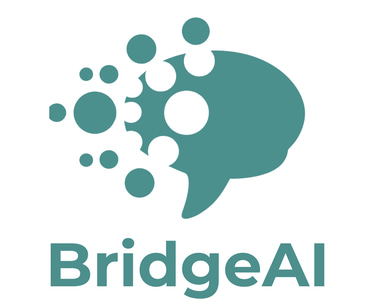10 Features Every ESL Lesson Plan Should Include (And How AI Can Help)
Creating effective ESL lesson plans requires balancing multiple pedagogical elements while considering diverse student needs. Here's how to ensure your lessons hit all the essential marks—and how AI technology is making the process faster and more effective.
Poppet Celdran
3/28/20256 min read


Why Lesson Structure Matters
Ask any experienced ESL teacher about their early teaching days, and you'll likely hear stories about lesson plans gone wrong. Perhaps activities ran too short, instructions confused students, or the materials simply didn't engage learners.
"When I first started teaching business English in Tokyo, I'd often find myself with 15 minutes left and no activities planned," shares Michael, an ESL teacher with 12 years of experience. "Now I know that proper lesson structure is the foundation of effective teaching."
Research supports this view—structured ESL lessons with clear progression have been shown to increase student retention by up to 37% compared to loosely organized teaching sessions. But what exactly makes a lesson plan effective?
The 10 Essential Components of Effective ESL Lesson Plans
1. Clear Learning Objectives
Every strong lesson plan begins with specific, measurable objectives that answer: "What will students be able to do by the end of this lesson?"
Traditional approach: Teachers spend 10-15 minutes researching standards and formulating objectives that align with curriculum requirements.
AI-enhanced approach: AI tools can generate appropriate CEFR-aligned objectives based on the target language feature, student proficiency level, and lesson context.
Example objective: "By the end of this lesson, students will be able to make polite requests using 'could' and 'would' with 80% accuracy in both speaking and writing."
2. Engaging Warm-Up Activities
Effective warm-ups activate prior knowledge, introduce the lesson topic, and energize students for learning.
Traditional approach: Teachers browse resource books or websites for 15-20 minutes seeking appropriate warm-up activities.
AI-enhanced approach: AI can suggest contextually relevant warm-ups based on the lesson objective, student age, and cultural context, generated in seconds.
Example warm-up: "Students will work in pairs to rank different requests from most polite to least polite, then discuss their rankings as a class."
3. Scaffolded Presentation of New Material
New language needs to be presented in a clear, contextualized manner with scaffolding that supports student understanding.
Traditional approach: Teachers spend 30+ minutes creating or adapting presentations, often trying to make authentic materials accessible.
AI-enhanced approach: AI can generate scaffolded presentation materials with built-in language support, tailored to the target proficiency level.
Example presentation: "A dialog between colleagues in an office setting that naturally incorporates target request forms, with key phrases highlighted and graded vocabulary."
4. Controlled Practice Activities
Structured activities allow students to practice new language in a supportive environment with clear parameters.
Traditional approach: Teachers create worksheets, gap-fills, or matching exercises, taking 20-30 minutes per activity.
AI-enhanced approach: AI can generate varied practice activities in seconds, with customizable difficulty levels and built-in differentiation.
Example controlled practice: "Sentence completion exercise where students choose the appropriate polite request form based on the situation, with contextual clues provided."
5. Communicative Practice Opportunities
Authentic communication activities help students internalize language through meaningful interaction.
Traditional approach: Teachers spend 20-25 minutes designing role-plays, information gaps, or discussion activities.
AI-enhanced approach: AI can generate communicative activities that incorporate the target language while meeting specific classroom needs (pair work, group work, whole class).
Example communicative practice: "Role-play scenarios where students must make requests in different situations (restaurant, office, classroom) with role cards providing situational guidance."
6. Cultural Context and Relevance
Effective ESL lessons incorporate cultural elements that make language meaningful and applicable to real-world situations.
Traditional approach: Teachers research cultural aspects and appropriate examples, often taking 15-30 minutes.
AI-enhanced approach: AI can generate culturally relevant examples and explanations tailored to both the target language culture and students' local context.
Example cultural context: "Explanation of how politeness levels in requests differ between American and British English, with examples of how these compare to politeness conventions in students' home culture."
7. Multi-skill Integration
Strong lesson plans incorporate multiple language skills (reading, writing, listening, speaking) for holistic language development.
Traditional approach: Teachers manually balance activities across skill areas, adding 15-20 minutes to planning time.
AI-enhanced approach: AI can automatically incorporate balanced skill practice, generating integrated activities that address multiple competencies.
Example multi-skill activity: "Students listen to a dialog containing polite requests, read a follow-up email with similar language, discuss the situations in pairs, and write their own response email."
8. Differentiation Strategies
Addressing mixed-ability classrooms requires planning variations to support struggling learners and challenge advanced students.
Traditional approach: Teachers create multiple versions of materials or supplementary activities, adding 20-40 minutes to preparation time.
AI-enhanced approach: AI can simultaneously generate differentiated materials for multiple proficiency levels, with appropriate scaffolding for each.
Example differentiation: "Basic version provides request structures with word banks; intermediate version offers sentence starters; advanced version presents only situational prompts."
9. Assessment Opportunities
Effective lesson plans include ways to check understanding and measure progress toward objectives.
Traditional approach: Teachers develop quizzes or formative assessments, taking 15-25 minutes.
AI-enhanced approach: AI can generate formative assessments aligned with lesson objectives, including rubrics and answer keys.
Example assessment: "Exit ticket where students write three requests for different situations, demonstrating their understanding of politeness levels and appropriate structures."
10. Flexible Timing and Back-up Activities
Comprehensive lesson plans account for pacing variables with timing estimates and additional activities.
Traditional approach: Teachers estimate timing and create extra activities, adding 10-15 minutes to planning.
AI-enhanced approach: AI can suggest appropriate timing based on activity type and proficiency level, while generating supplementary activities for flexible lesson flow.
Example back-up activity: "Request chain game where students must respond to a request and make a new one to another student, continuing around the class with increasing complexity."
The Cumulative Planning Burden
When calculated together, creating a comprehensive lesson plan with all ten essential components traditionally requires 2.5-3.5 hours of teacher preparation time per hour of instruction. For a teacher with a 20-hour teaching load, this translates to 50-70 hours of weekly preparation—clearly unsustainable.
This is where AI-powered lesson planning represents a transformative opportunity. Tools like Bridge.AI can generate complete lesson plans incorporating all ten essential components in less than 3 minutes, reducing preparation time by over 95%.
Beyond Time Savings: The Quality Improvement
The most compelling aspect of AI-assisted lesson planning isn't merely efficiency—it's the potential quality improvement. By handling the structural and content generation aspects of planning, AI tools allow teachers to focus on personalization and delivery.
"I was spending so much time just creating basic materials that I rarely had energy left for thinking about individual student needs," explains Elena, an ESL teacher in Spain. "Now that AI handles the foundation, I can focus on adding those personal touches that really reach my students."
Teachers using AI-powered planning report:
Greater lesson coherence: All components naturally build toward learning objectives
More varied activities: Increased diversity in exercise types and approaches
Better differentiation: More consistently addressing mixed-ability needs
Improved assessment alignment: Tighter connection between objectives and evaluation
More cultural relevance: Easier incorporation of contextually appropriate examples
The Teacher's Role in AI-Enhanced Planning
While AI can generate comprehensive lesson components, the teacher's expertise remains essential for:
Final content selection: Choosing which AI-generated materials best fit specific student needs
Personalization: Adding references to student interests, previous lessons, or class experiences
Delivery planning: Determining how to present material in an engaging, effective manner
Cultural adaptation: Ensuring materials respect and reflect local educational norms
Cross-curricular connections: Integrating language learning with other subject areas
"AI doesn't replace my teaching expertise—it amplifies it," notes Takashi, a university-level ESL instructor in Japan. "I used to spend hours creating basic worksheets. Now I can focus on how to make the lesson truly impactful for my specific students."
Getting Started with AI-Enhanced ESL Planning
For teachers interested in incorporating AI into their lesson planning workflow, consider these steps:
Start with objectives: Clear learning goals help AI tools generate more relevant content
Specify context: Provide details about student age, proficiency level, and cultural background
Request multiple options: Generate several versions of activities to choose from
Customize output: Adapt AI-generated materials with your personal teaching style
Iterate and refine: Use feedback from each lesson to improve future planning prompts
The most effective approach combines AI efficiency with teacher expertise—using technology to handle routine aspects of planning while applying professional judgment to finalize and deliver lessons.
Conclusion: The Future of ESL Lesson Planning
As AI tools continue to evolve, ESL lesson planning is undergoing a fundamental transformation. The question is shifting from "How can I create all these components from scratch?" to "How can I best adapt and enhance these AI-generated foundations?"
This represents not just a time-saving opportunity but a chance to redefine the teacher's role. When freed from the burden of creating every worksheet, dialog, and activity from scratch, teachers can invest more energy in the interpersonal and adaptive aspects of teaching that truly impact student success.
By ensuring lessons consistently include all ten essential components—without the prohibitive time investment previously required—AI-enhanced planning promises to elevate both teaching quality and teacher wellbeing.
Bridge.AI helps ESL teachers create complete, pedagogically sound lesson plans in minutes instead of hours. Our AI-powered platform generates all ten essential components while allowing for teacher customization and control. Learn more at www.bridgeai.pro.
Keywords: ESL lesson plan template, ESL teaching materials, AI lesson planning, TEFL lesson structure, ESL lesson components, language teaching planning, ESL activity ideas, ESL lesson differentiation, ESL assessment strategies, language teacher efficiency
Innovate
Empowering ESL teachers with AI-driven solutions.
Connect
info@bridgeai.pro
+84 909074793
© 2025. BridgeAI by Zen Tech Asia LLC. All rights reserved.
www.bridgeai.pro
